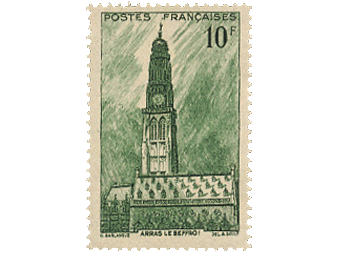 After the First Reich (or Holy Roman Empire), from 962 to 1806, and the Second Reich, from 1871 to 1918, and mainly because the humiliation which led to the fall of Emperor Wilhelm II at the end of World War I and all the impositions that the German nation had to accept unconditionally, Adolf Hitler nurtured the dream of a Third Reich, which ends up imposing in 1933, after the rise to power of his National Socialist Party, which won the electoral supremacy during the political disorder that followed the economic crisis of 1929-1930, which creates instability and favour the emergence of extremism.
After the First Reich (or Holy Roman Empire), from 962 to 1806, and the Second Reich, from 1871 to 1918, and mainly because the humiliation which led to the fall of Emperor Wilhelm II at the end of World War I and all the impositions that the German nation had to accept unconditionally, Adolf Hitler nurtured the dream of a Third Reich, which ends up imposing in 1933, after the rise to power of his National Socialist Party, which won the electoral supremacy during the political disorder that followed the economic crisis of 1929-1930, which creates instability and favour the emergence of extremism. Immediately, Hitler prepares to impose the dictatorship, abolishing the constitution of the Weimar Republic (1919-33) and all political parties except his own, passing to control the justice, media, security forces and education. Also leaves the League of Nations and the disarmament conference, reactivating the compulsory military service.
Immediately, Hitler prepares to impose the dictatorship, abolishing the constitution of the Weimar Republic (1919-33) and all political parties except his own, passing to control the justice, media, security forces and education. Also leaves the League of Nations and the disarmament conference, reactivating the compulsory military service.The objectives of Hitler were related to the imposition of German superiority affirmed the principle that other peoples were inferior, especially Jews (in fact, held the German economic structure, coveted by the Nazis to ensure economic reconstruction), the Slavs, Gypsies and other non-Germanic peoples. Within this framework of action, advocated the creation of a "living space" (Lebensraum) for German people, found the formula to justify the expansionism of the Reich, including in the East.
On November 9, 1938, groups will burn down the synagogues and destroy the business of the Jews, a night that has become known as the 'Night of Broken Glass' (Kristallnacht), or 'broken glass'.
At the same time, Hitler and Nazi Germany were preparing for war. Clearly violating the Treaty of Versailles of 1919, occupy the Rhineland in 1936, signing a pact with Mussolini's fascist Italy and an anti-communist agreement with the Japanese, forming, with these three nations, the Axis Rome-Berlin-Tokyo.
In August 1939, the Reich gets more of its diplomatic hoaxes, with the agreement with USSR to its neutrality if one of the countries involved in war, and also agrees, but secretly, with the division of Poland and much of Eastern Europe between them.
 On the first day of next month, however, the Germans forced the Polish border and march on Danzig, whose "corridor" wanted to join the conquering East Prussia, which triggers the Second World War (whose history is inseparable from the Hitler regime). The Third Reich was defeated and completely destroyed in the conflict, despite dominating scathingly until 1941 (Blitzkrieg).
On the first day of next month, however, the Germans forced the Polish border and march on Danzig, whose "corridor" wanted to join the conquering East Prussia, which triggers the Second World War (whose history is inseparable from the Hitler regime). The Third Reich was defeated and completely destroyed in the conflict, despite dominating scathingly until 1941 (Blitzkrieg).
Declaring war on several European powers, in turn, and then to USA, suffer tremendous setbacks on the Russian front: Nazi Germany is losing military strength (particularly with the Allied bombings of the country from 1943), being harassed for their borders and ending to surrender unconditionally in 1945, but after losing former territories and redefining its borders (Yalta and Potsdam agreements).
By now only pages from 1933 to 1935.







































